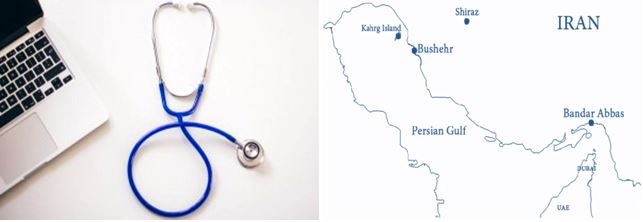THE RELATION BETWEEN GENERAL HEALTH AND ORGANIZATIONAL PERFORMANCE IN PERSONNEL OF SHIRAZ CITY EMERGENCY IN 2017
Keywords:
General health, emergency, organizational performanceAbstract
Objectives: Health is the fundamental right of every human and a social goal and all governments and organizations are bound to supply individuals' health and organizational performance is considered one of the most important structures discussed in management projects and undoubtedly the most important criterion of assessing success in commercial companies. The general objective of this study is to examine the relation between general health and organizational performance of authorities and personnel of Shiraz city emergency in 2017. This study is applied in respect of objective.
Methods: The statistical population in the present study includes all Shiraz City emergency personnel. And their number according to obtained results is 200 persons that based on the table of Cochran sample content, 125 persons were specified as research sample. In this study, two questionnaires were used. Firstly, for examining the general health, Goldberg and Hiller measurement instrument (1979) was used. Also, for examining the organizational performance, Heresy and Goldsmith questionnaire was used. For analysis of the collected data Pearson correlation coefficient test and regression were used and using SPSS software version 18, the research hypotheses were examined.
Results: The results of the research showed that there is a significant and positive relation between general health and organizational performance of Shiraz City emergency personnel and also there is a significant and positive relation between physical symptoms, signs of social function as components of general health and organizational performance of Shiraz city emergency personnel. There is a negative relation between anxiety symptoms and depression symptoms as components of general health and organizational performance of Shiraz city emergency personnel.
Conclusion: The results of multiple correlation coefficient show that there is a direct and significant relation between components of general health and organizational performance ( r=0.499) and the determination factor r2 shows that 25% of organizational performance variance is related to the mentioned factors and 75% is related to factors out of model. Therefore, training general health and organizational performance should be one of operational goals of Shiraz city emergency personnel and this should be considered in training planning.
Peer Review History:
Received 6 December 2017; Revised 5 February; Accepted 4 March, Available online 15 March 2018
Academic Editor: Dr. A.A. Mgbahurike , University of Port Harcourt, Nigeria, amaka_mgbahurike@yahoo.com
, University of Port Harcourt, Nigeria, amaka_mgbahurike@yahoo.com
Reviewer(s) detail:
Dr. Taiwo O Elufioye , University of Ibadan, Nigeria, toonitaiwo@yahoo.com
, University of Ibadan, Nigeria, toonitaiwo@yahoo.com
Dr. Xinwei Li , Jilin University, China, lixinwei100@jlu.edu.cn
, Jilin University, China, lixinwei100@jlu.edu.cn
Downloads

Published
How to Cite
Issue
Section

This work is licensed under a Creative Commons Attribution-NonCommercial 4.0 International License.










 .
.